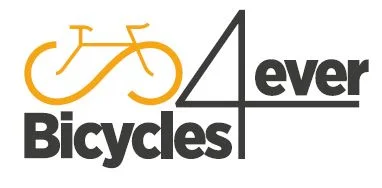Its The Beginning of 2024 and The Rumors are REALY BAD for The Cycling Industry with GC Performance
Video Its The Beginning of 2024 and The Rumors are REALY BAD for The Cycling Industry with GC Performance
Video Its The Beginning of 2024 and The Rumors are REALY BAD for The Cycling Industry with GC Performance YouTube Channel.
Its The Beginning of 2024 and The Rumors are REALY BAD for The Cycling Industry
The State of the Bicycle Industry and Its Impact on Small Retailers in 2024
The bicycle industry has been facing challenges, with many small retailers experiencing a decline in sales, repair services, and walk-in traffic. In the midst of these changes, rumors have been circulating about major manufacturers and distributors owing significant amounts of money, and big-name manufacturers have been offering bargain deals to open up stores. This article will explore the current state of the bicycle industry, focusing on sales, services, rumors, and the impact of major manufacturers on small retailers as we move into 2024.
Sales and Services in Bicycle Retail
The current seasonal peak in Florida has typically seen an influx of tourists purchasing and repairing bicycles. However, the landscape has changed, with fewer tourists spending less on bicycle-related purchases. Walk-in traffic has also reduced significantly, pointing to a shift in consumer behavior. While service work remains steady, the demand for road bikes, mountain bikes, and hybrids has substantially declined.
Impact on Small Retailers
Small retailers, such as Bicycle Generation, are feeling the effects of this industry shift. The decline in sales of complete bikes, especially entry-level road bikes, is impacting their traditional customer base. However, the increase in online sales and outreach through social media has contributed to maintaining a steady flow of income. The current sales figures are below the pandemic levels but better than pre-pandemic numbers, reflecting some recovery while still facing challenges.
Industry Rumors
Rumors about large companies owing millions of dollars to each other and to component suppliers have been circulating, indicating financial strain within the industry. Distributors and manufacturers have been implementing account watch measures, signaling caution in extending credit and managing potential defaults. Such financial disruptions are indicative of the economic challenges facing the bicycle industry post-pandemic.
Discounts and Inventory Challenges
Amid the industry’s turbulence, large manufacturers have been offering steep discounts to clear out inventory, especially in the e-bike market. This strategy has benefitted consumers seeking bargains but has squeezed margins for retailers. Stock levels and deals point to an industry-wide effort to move surplus product. This, while beneficial for consumers, presents challenges for small retailers to maintain healthy margins.
Changes in Manufacturer-Store Dynamics
Traditionally, opening a store line with a major manufacturer required substantial orders and financial commitments from retailers. However, the current landscape has seen big-name manufacturers reducing their entry requirements to open new lines to small retailers. This shift suggests a desire to increase distribution channels in response to changing consumer behavior and market dynamics.
Impact on Large Manufacturers
The struggles within the bicycle industry have become evident through the actions of major manufacturers. The departure of prominent CEOs, layoffs, and declining sales figures at large companies like REI point towards retrenchment and reorganization. This downturn has also been reflected in declining stock prices and financial forecasts, indicating widespread challenges within the industry.
Navigating the Industry Challenges
Small retailers are advised to remain cautious and make calculated decisions amidst the current market uncertainty. This includes being vigilant with finances, avoiding high-risk commitments, and focusing on maintaining liquidity. The history of resilience through previous economic downturns also provides a guide for navigating the current challenges with prudence and adaptability.
In conclusion, the bicycle industry is undergoing a significant transition, with small retailers facing shifting consumer trends, financial strain within the industry, and changes in traditional manufacturer-store dynamics. As we move into 2024, the industry’s landscape will continue to evolve, reshaping the dynamics between small retailers and major manufacturers while also challenging traditional business models. It is crucial for stakeholders to remain adaptable and strategic to weather the current challenges and emerge stronger in the post-pandemic bicycle industry.
The opinions expressed in this space are the sole responsibility of the YouTube Channel GC Performance and do not necessarily represent the views of CicloNews.

